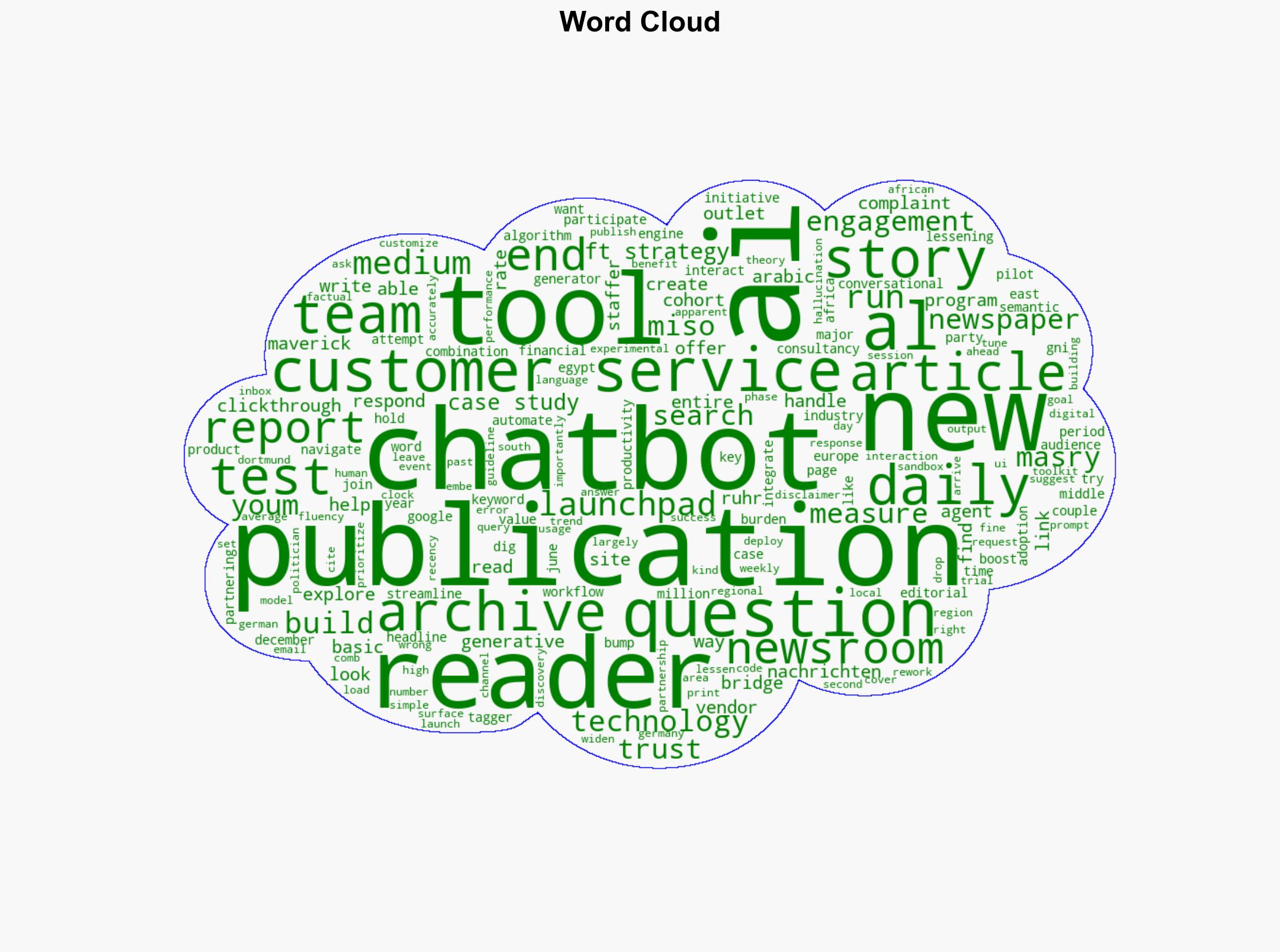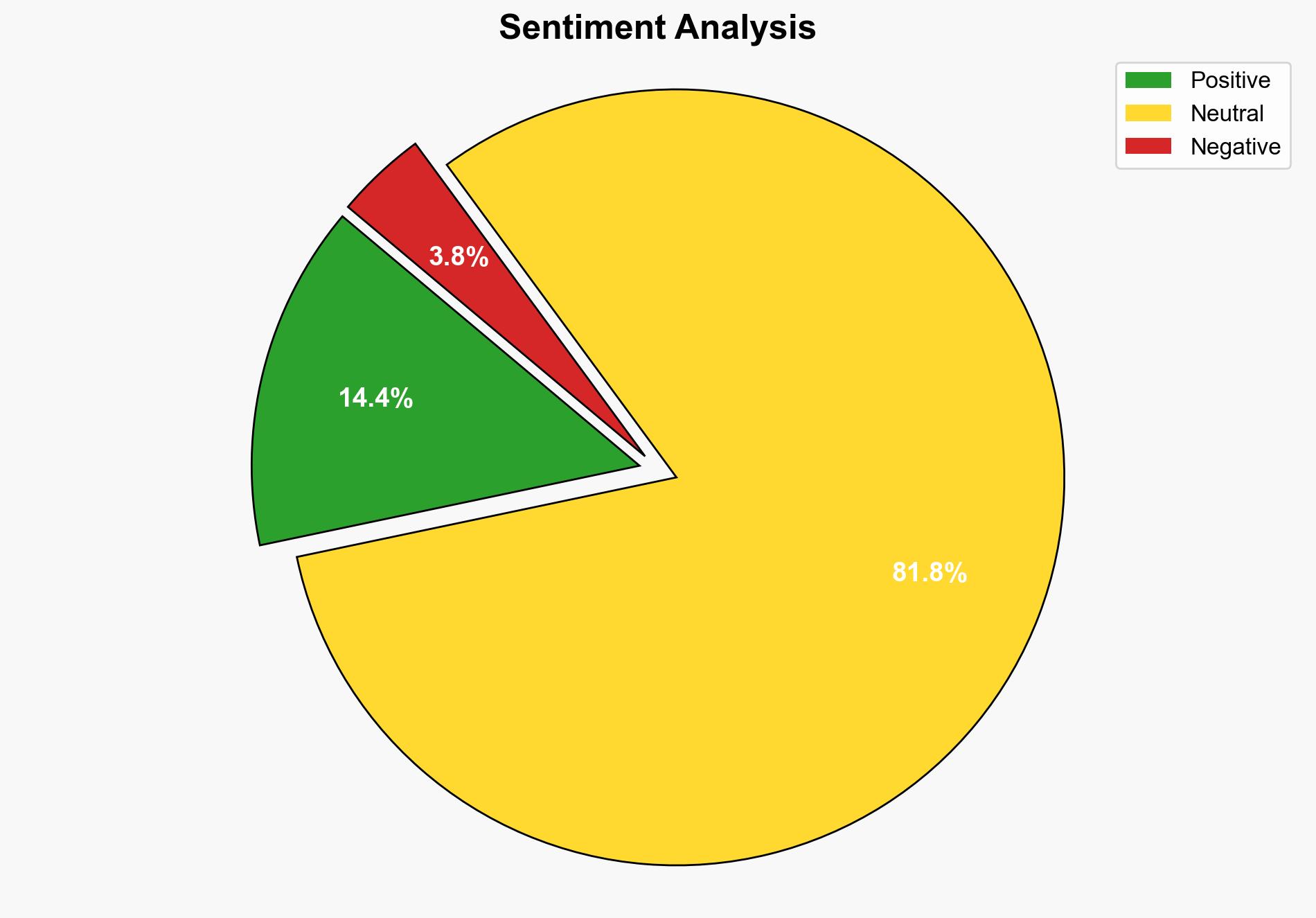Across Europe the Middle East and Africa newsrooms are experimenting with conversational AI – Niemanlab.org
Published on: 2025-09-02
Intelligence Report: Across Europe the Middle East and Africa newsrooms are experimenting with conversational AI – Niemanlab.org
1. BLUF (Bottom Line Up Front)
The strategic judgment indicates that the adoption of conversational AI tools in newsrooms across Europe, the Middle East, and Africa is primarily aimed at enhancing reader engagement and streamlining editorial workflows. The most supported hypothesis is that these AI tools will improve productivity and audience interaction, although there are significant risks related to trust and factual accuracy. Confidence level: Moderate. Recommended action: News organizations should implement robust oversight mechanisms to ensure AI tools enhance rather than undermine journalistic integrity.
2. Competing Hypotheses
1. **Hypothesis A**: Newsrooms are adopting conversational AI primarily to increase efficiency and reduce operational costs by automating routine tasks such as customer service and content tagging.
2. **Hypothesis B**: The primary motivation for adopting conversational AI is to enhance reader engagement and interaction, thereby increasing audience loyalty and trust in the publication.
Using ACH 2.0, Hypothesis B is better supported due to the emphasis on audience engagement and the strategic goal of building conversational tools to interact with readers, as indicated by the case studies.
3. Key Assumptions and Red Flags
– **Assumptions**: It is assumed that AI tools will be able to handle complex language nuances, particularly in non-English languages like Arabic and German, without significant errors.
– **Red Flags**: The report highlights potential issues with AI “hallucinations” or factual errors, which could undermine trust if not addressed. There is also a risk of over-reliance on third-party vendors for AI solutions, which could introduce biases or security vulnerabilities.
4. Implications and Strategic Risks
– **Economic**: Successful AI integration could reduce operational costs but may also lead to job displacement within the newsroom.
– **Cyber**: Increased reliance on AI tools could expose newsrooms to cybersecurity risks, particularly if sensitive data is mishandled.
– **Geopolitical**: The adoption of AI by media outlets could influence public opinion and political discourse, especially if AI-generated content is perceived as biased or inaccurate.
– **Psychological**: Reader trust could be eroded if AI tools frequently produce errors or are perceived as undermining journalistic integrity.
5. Recommendations and Outlook
- **Mitigation**: Implement rigorous testing and quality assurance processes for AI tools to minimize errors and bias.
- **Opportunity**: Leverage AI to explore new content formats and personalized reader experiences.
- **Scenario Projections**:
– **Best Case**: AI tools significantly enhance productivity and reader engagement, leading to increased trust and revenue.
– **Worst Case**: AI errors lead to a loss of credibility and audience trust, resulting in decreased readership and potential financial losses.
– **Most Likely**: Gradual improvement in AI tool accuracy and functionality, with mixed impacts on trust and engagement.
6. Key Individuals and Entities
– Financial Times
– Google News Initiative
– Al Masry Al Youm
– Daily Maverick
– Ruhr Nachrichten
– Miso AI
– Bridge Media
7. Thematic Tags
artificial intelligence, media innovation, reader engagement, newsroom efficiency, trust in journalism




